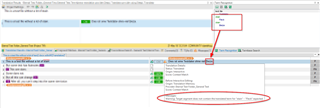I am in the process of re-organizing my organization's glossary. In several sources, including SDL sources like the White Paper on Terminology Management, the concept-oriented approach to term management is promoted. From a logical point of view, this is very convincing and I would like to implement it.
In this approach, each concept has a a termbase entry, so "stain" (the discoloration) has an entry and "stain" (the penetrative dye) has one = two entries (more if the respective verbs are added).
When I organize my TB like this, I get warnings (or errors, whatever is defined in the settings) for each homonym. The white paper mentioned above uses "monitor" as an example (the screen and the activity of observing).
Since the concept-oriented approach is so much promoted by SDL, I am wondering if I am doing something wrong that following that recommendation seems to render a key feature of MultiTerm integration in Studio practically useless. Is there an option to only warn if no target term at all is used?
Daniel

Generated Image Alt-Text
[edited by: Trados AI at 1:25 PM (GMT 0) on 5 Mar 2024]


 Translate
Translate